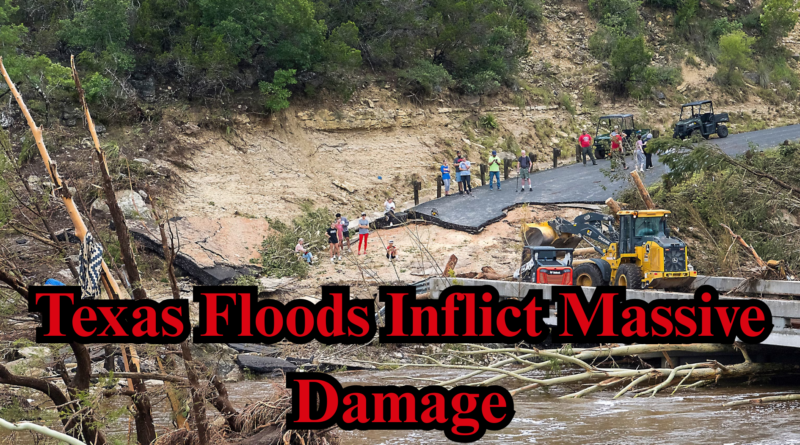Texas Floods Inflict Massive Damage
Central Texas is reeling from a devastating natural disaster as catastrophic flash floods have swept through the region, killing at least 129 people, including 27 children. The floods, triggered by days of relentless rainfall, submerged entire neighborhoods, washed away infrastructure, and left communities in chaos. Emergency services have been stretched thin as they attempt to rescue stranded residents and recover bodies. Authorities have stated that over 160 people are still missing, raising fears that the death toll may continue to climb.
The economic impact of the disaster is staggering, with early estimates suggesting damages between $18 and $22 billion. Homes, businesses, roads, and bridges have been destroyed or severely damaged, and thousands have been displaced. Agricultural losses are also expected to be significant, particularly in rural counties that were already struggling with drought earlier this year. Insurance claims are flooding in, and state officials are calling on federal agencies for emergency aid and long-term recovery funding.
Environmental and climate experts are pointing to climate change as a major contributing factor. Unusually warm Gulf waters and shifting weather patterns have intensified storms, increasing the likelihood of such catastrophic flooding events. Scientists have warned for years that Texas’ infrastructure is ill-prepared for extreme weather, and this disaster has brought that vulnerability into sharp focus. The increasing frequency of such events has reignited debates around climate policy and disaster preparedness.
Criticism is also mounting over reduced funding for national weather services and early warning systems. Many affected communities reported receiving inadequate notice before the floodwaters arrived. Budget cuts to the National Weather Service and regional emergency management programs over the past decade have hampered the ability to issue timely warnings and prepare residents. Lawmakers are now facing pressure to reinvest in these critical services to prevent future tragedies.
In response to the disaster, Texas Governor and federal officials have declared a state of emergency, deploying the National Guard and FEMA to assist in rescue and recovery efforts. Temporary shelters have been established, and medical teams are treating flood-related injuries and infections. Volunteers and non-profit organizations have mobilized to deliver food, water, and supplies to those displaced. However, access to some rural areas remains limited due to damaged roads and ongoing flood risks.
As Central Texas begins the long road to recovery, attention is turning toward rebuilding not just homes and infrastructure, but also trust in public safety systems. Experts emphasize that adaptation to changing climate conditions must become a priority in urban planning and emergency preparedness. The Texas floods stand as a grim reminder of the rising human and economic toll of extreme weather and the urgent need for systemic change.




